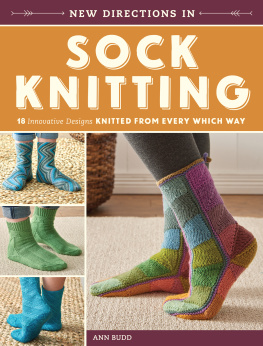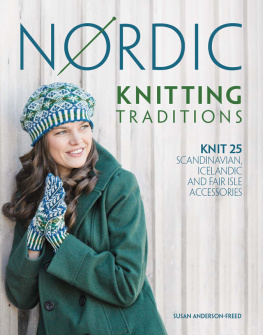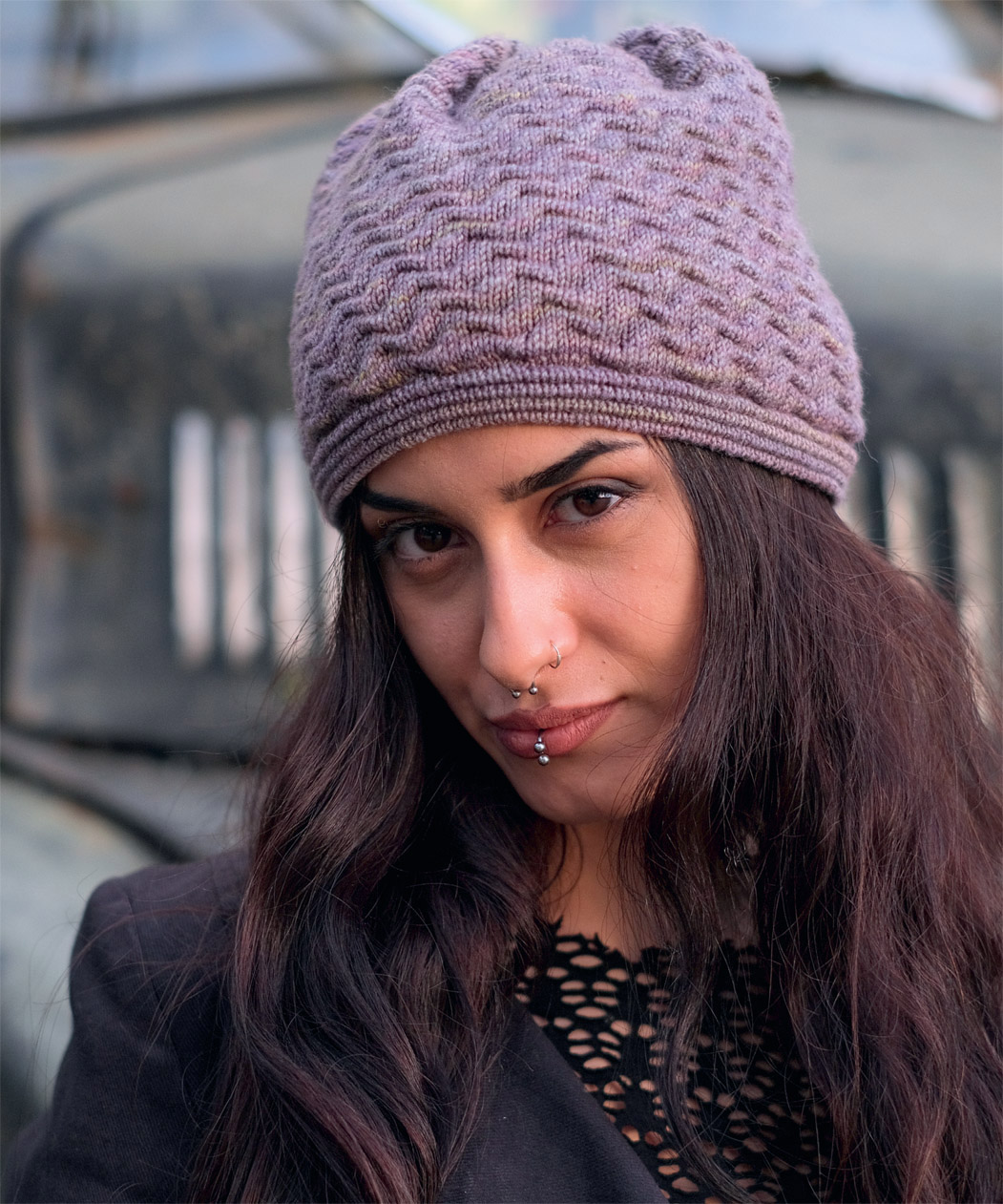With an instinctive flair for unusual construction and a passion for innovation, Woolly Wormheadis a designer whose patterns are trusted and celebrated by knitters all over the world. As a designer, Woolly is driven by a need to create and develop her understanding of three-dimensional form. Communicating her ideas and sharing her specialized knowledge with her followers are key to Woollys success as a designer.
woollywormhead.com
SIZES
To fit size: 18 (20, 22, 24) in./45.75 (51, 56, 61) cm
Finished size: 15.75 (17.5, 19.5, 21.25) in./40 (44.5, 49.5, 54) cm
YARN
226 (294, 370, 413) yd./207 (268, 338, 378) m sock weight (super fine), plied yarn
Additional 47 yd./43 m for a 6 6 in./15 15 cm swatch in St st
NEEDLES & NOTIONS
Set of US 2 (2.75 mm) DPNs or circular (or size needed to obtain gauge)
Spare needle or DPN for picking up sts
US C-2 (2.75 mm) crochet hook
Approx. 3 yd./3 m waste yarn
Stitch marker as necessary
Tapestry needle
SAMPLE DETAILS
Shown in Whimzy Sokkusu O (416 yd./380 m per 4.05 oz./115 g; 100% superwash merino)
Shown in size 22 in./56 cm on model with 21.25 in./54 cm circumference head
GAUGE
26 sts 35 rows to 4 in./10 cm on US 2 (2.75 mm) needles over St st
26 sts 80 rows to 4 in./10 cm on US 2 (2.75 mm) needles over tucked pattern
SKILLS REQUIRED
- knit and purl stitches
- knitting in the round
- increases and decreases
- provisional cast-on (see page 124)
- picking up stitches
- joining live stitches (see page 125)
HINTS
The tucks on the brim are designed to be tight and, as such, are fiddly to work. You may find it easier to pick up around 10 or 15 stitches at a time with either a short DPN or a cable needle ready for joining or to join one stitch at a time.
I also suggest you pick up the stitches from the first row of bumps (i.e., the reverse of the first round of stockinette stitch in each tuck), as this will make it easier to maintain the correct position. Alternatively, you could pick up the stitches from the reverse of last join round, which will make the brim even firmer and more decorative, but this approach will make the joining round tighter, too.
INSTRUCTIONS
Using waste yarn and provisional cast-on method, cast on 102 (114, 126, 138) sts. Change to main yarn and join in the round, being careful not to twist stitches. Place stitch marker to indicate start of round.
BRIM
Work stockinette stitch (knit every stitch) for five rounds. Next, slowly remove the provisional cast-on, stitch by stitch, and transfer all live stitches to spare needlecircular needles are best for this job. Holding both sets of needles and live stitches parallel, with WS together and RS facing you, you will join the brim tuck. Work the next round as follows:
Join rnd:*Knit next st from back needle together with the next st from the front needle; rep from * to end. 102 (114, 126, 138) sts
The first tuck has now been created. Now work a further five rounds of stockinette stitch.
MAKE TUCK
Using spare circular needle, pick up (but do not knit) 102 (114, 126, 138) sts from back of first knit round worked after the joining round (i.e., from the first round of single purl bumps on the WS of the work).
Holding both sets of needles parallel, with live stitches on the front needle and picked-up stitches on the back, with WS together and RS facing you, work the next round as follows:
Join rnd:*Knit stitch from back needle together with the stitch from the front needle; rep from * to end. 102 (114, 126, 138) sts
Work a further five rounds of stockinette stitch and repeat the tuck-making process (three tucks have been created so far).
Work a further five rounds of stockinette stitch and repeat the tuck-making process by picking up the stitches from the purl bumps on the reverse of the first of the five rounds. This last tuck will be joined differently; work join round as follows to also incorporate increases for the body:
Brim join/inc rnd:






